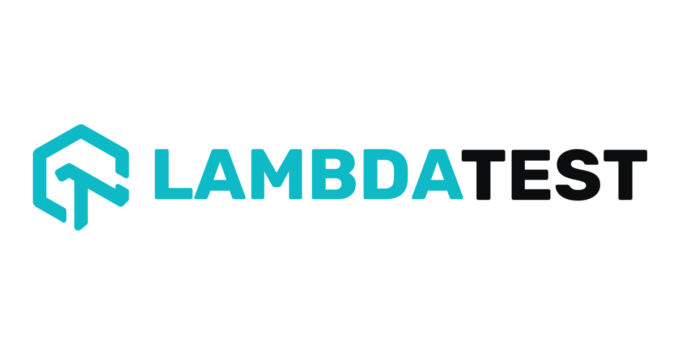In recent years, automation testing has seen remarkable progress, notably with the integration of artificial intelligence (AI). This development, particularly with generative AI, has transformed testing methodologies.
AI’s capacity to understand and emulate human interactions has unlocked opportunities to devise extensive and lifelike test scenarios. Leveraging AI’s capabilities enhances the efficiency, accuracy, and adaptability of automation testing in response to evolving software environments.
This article will explore the potential of leveraging AI to supercharge Playwright tests.
So, let’s get started!
Overview of Playwright

Playwright is a popular tool for automated browser testing. It can run tests locally on your computer or servers as part of a continuous integration pipeline. The Playwright works on Windows, Linux, and macOS operating systems. Without a GUI, it can run tests in a visible browser window or headless mode.
Playwright supports multiple programming languages, such as TypeScript, JavaScript, Python, .NET, and Java. This flexibility allows developers to write tests in the language they are most comfortable with.
Since its first release, Playwright has gained considerable attention and adoption from developers. As of April 2024, its GitHub repository has over 6.6k stars and 3.3k forks, showing its growing popularity. On average, the Playwright package is downloaded over 1.2 million times weekly from NPM.
Both large companies and open-source projects are using Playwright. Some major users include Adobe Spectrum, Visual Studio Code, and the React Navigation library. The widespread adoption highlights Playwright’s reputation as a capable and trusted browser automation tool in the software industry.
Why Playwright?
Playwright offers a range of features that set it apart from other test automation tools. Some notable features include:
- Mobile Emulation: Supports testing for Google Chrome for Android and Mobile Safari, enabling mobile emulation for comprehensive testing.
- Video Recordings: Automatically generates video recordings of browser sessions, allowing for easy review and analysis of test results.
- Actionability Checks: Verifies element actionability before executing, ensuring that actions perform as expected.
- Web-First Assertions: Provides assertions tailored for dynamic web applications, automatically retrying checks until specified conditions are met.
- Execution Trace: Allows viewing and saving of test execution traces as action logs, videos, snapshots, and screenshots, aiding in debugging and analysis.
- Configure Options: Offers options to automatically re-run tests upon failure, enhancing reliability and stability.
- Out-of-Process Execution: Runs tests out of process to accommodate modern web browser architecture, supporting automation of scenarios across multiple pages.
- Network Interception: Supports stub and mock network requests using context-wide network interception, enabling modification and monitoring of network traffic.
- Browser Context Isolation: This feature provides each test with its own browser context, ensuring fast and lightweight test isolation without repetitive login operations.
- Test Generation: This feature allows you to generate tests from recorded actions and save them in any supported language, facilitating test creation and maintenance.
- Playwright Inspector: Offers an inspector tool to inspect pages, generate selectors, step through test execution, and explore execution logs, simplifying test development and debugging.
These features collectively contribute to Playwright’s robustness and versatility, making it a competitive choice for test automation across various web applications and scenarios.
How Artificial Intelligence Can Enhance Playwright Tests

Integrating artificial intelligence (AI) with Playwright tests can enhance efficiency, intelligence, and coverage. Although Playwright doesn’t currently feature built-in AI capabilities, its adaptable architecture makes it suitable for integration with AI technologies, thus facilitating more intelligent and comprehensive testing processes.
- Test Case Generation and Optimization: AI, powered by machine learning and natural language processing, can automatically analyze application requirements or existing test cases to generate corresponding test scripts or data. This AI-assisted test generation accelerates testing, improves coverage, and identifies overlooked edge cases.
- Visual Testing and Validation: Integrating AI-powered computer vision algorithms enhances Playwright’s visual testing capabilities. AI enables intelligent visual validation, understanding web page content and structure, improving accuracy and reliability, and reducing maintenance overhead.
- Handling Dynamic and Complex Applications: AI can enhance Playwright’s ability to test dynamic and complex web applications by understanding and modeling their behavior. This enables adaptive testing strategies for comprehensive coverage.
- Test Execution Optimization: Techniques like reinforcement learning optimize Playwright tests for better performance and efficiency. By analyzing test execution data, AI identifies bottlenecks, adjusts test scenarios, and minimizes test run times while maintaining coverage.
- Test Reporting and Analysis: AI analyzes test results, identifies patterns, and offers intelligent recommendations for prioritizing test cases, optimizing test suites, fixing code issues, and enhancing test reporting and analysis capabilities.
Although AI integration with Playwright is developing, the potential benefits are substantial. Leveraging AI technologies can transform Playwright into a more powerful, intelligent testing platform, delivering faster, more accurate, and more comprehensive testing results, ultimately contributing to higher-quality software products.
Tools for AI-powered Playwright Testing

Auto-Playwright
An open-source tool that connects Playwright with OpenAI’s language models. It uses AI to generate test cases and data for testing automatically. By analyzing requirements or existing test cases, Auto-Playwright creates corresponding Playwright test scripts, making testing tasks more efficient.
Key things AutoPlaywright can do:
- Create test code automatically. You describe what you want to test, and AutoPlaywright writes the code.
- Generate test data like user information or form inputs using AI.
- Fix test code that fails due to small changes on the website. It updates the code to make the tests pass again.
- Prioritize which tests should run first based on importance and past failures using AI.
- Check if the website looks correct visually by comparing screenshots using AI.
- Suggest updates to test code when the website code changes, so you don’t have to update tests manually.
- Use AI services like language models and computer vision to create advanced tests.
AutoPlaywright uses AI to make testing websites faster and easier. However, you may still need to review the AI-generated tests to ensure they work correctly. The AI capabilities depend on the quality of the AI models used.
LambdaTest

LambdaTest is an AI-powered test orchestration and execution platform that lets you run manual and automated tests at scale with over 3000+ real devices, browsers, and OS combinations. It offers advanced integration with Playwright and support for other automation testing tools.
Here’s how LambdaTest can enhance AI-powered Playwright testing:
- Parallel Test Execution: LambdaTest’s parallel testing feature allows simultaneous execution of multiple Playwright tests across various browser and device combinations. This accelerates testing, providing faster feedback cycles and reducing overall testing time.
- Test Reporting and Analytics: LambdaTest offers detailed test reporting and analytics. This provides insights into test performance and quality, aiding in identifying areas for improvement or optimization.
Best Practices to Consider When Integrating AI into Playwright Testing
The tools mentioned above offer specialized solutions for AI-powered Playwright testing, enhancing test case generation, visual testing, analysis, and customization.
Data Quality and Preparation:
- Ensure the data used to train the AI models is correct, covers all situations, and has no mistakes or unfair biases.
- Spend time cleaning up and preparing the data to improve the quality of the AI testing tools.
Picking the Right AI Approach:
- Carefully choose the best AI algorithms and models for your specific testing needs.
- Test and evaluate the AI models thoroughly before using them to ensure they work well, are accurate, and don’t have any unfair biases.
Understanding the AI Decisions:
- Use “explainable AI” techniques to show how the AI models make decisions to increase transparency and trust.
- Set up ways to monitor and check the AI testing tools to ensure they work properly and follow ethical rules.
Teamwork and Sharing Knowledge:
- Have the AI experts, developers, and testers work together closely to combine AI and testing effectively.
- Share knowledge and train each other so the AI experts understand testing and the testers understand AI.
Continuous Learning:
- Set up processes for the AI models to keep learning and improving as new data becomes available.
- Monitor how well the AI testing tools work, make changes, or retrain the models if needed.
Test Coverage:
- While AI can improve testing, it also uses traditional testing methods to ensure full coverage.
- Check for any overlap between AI-generated and manual tests and remove duplicate tests.
Data Security and Privacy:
- Have strong security measures to protect sensitive data for training the AI models or generated during testing.
- Follow all data privacy rules and ethical guidelines when handling data for AI testing.
Scalability and Speed:
- Design the AI testing tools to work well when scaled up, with enough computing power, data storage, and parallel execution.
- Optimize the AI models to run tests efficiently and provide feedback quickly.
Documentation and Maintenance:
- Document everything thoroughly, including data sources, AI model details, and how AI is integrated into testing.
- To keep the AI testing tools working well in the long term, use version control, code reviews, and maintenance processes.
Continuous Improvement:
- Regularly check how effective the AI testing tools are and get feedback to make improvements.
- Keep an open mind to new AI techniques and technologies that could enhance Playwright testing further.
By following these important practices, teams can effectively add AI capabilities to their Playwright testing with reliable, transparent, and ethical AI tools that improve test quality and efficiency.
Conclusion
One of the most significant advantages of AI-powered testing is its ability to generate test cases and data automatically. AI can analyze requirements, user stories, or existing tests and create new test scripts covering more scenarios and edge cases. This automation saves testers a lot of time and effort.
AI also enhances visual testing capabilities. With computer vision and machine learning, AI can accurately detect visual issues like broken layouts or inconsistent designs across different browsers and devices. This ensures a consistent user experience no matter how someone accesses the software.
Additionally, AI provides intelligent reporting and analysis of test results. It can identify patterns, bottlenecks, and areas for optimization. AI then recommends prioritizing tests, streamlining test suites, and fixing code problems. These insights make testing more targeted and effective.
Using AI for software testing is difficult. Teams must carefully select AI models that are well-suited for testing tasks and train them on high-quality data to perform well. Gathering and preparing this data can be challenging. AI systems can sometimes exhibit biases or raise ethical concerns. Teams have to identify and address these potential issues.
As AI capabilities continue advancing, the possibilities for AI-powered test automation will grow. Tools like Auto-Playwright, LambdaTest, and custom AI integrations are just the beginning. With proper planning and best practices, teams can future-proof their testing approaches.
Ultimately, AI-powered Playwright testing represents a transformative opportunity to enhance software quality assurance. By combining human expertise with machine intelligence, testers can achieve faster, smarter, and more reliable testing – ultimately leading to better products for users.










